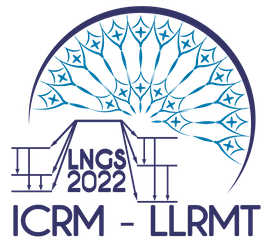Speakers
Description
ABSTRACT
Detectors needed for rare event search experiments, like neutrinoless double beta decay, neutrino interactions and those searching for direct evidence of dark matter require a high level of radiopurity to minimize background signals thus guaranteeing a high sensitivity.
Therefore, the assessment of chemical and radio-purity of all raw materials and reagents involved in the crystal growth plays a crucial role to ensure a successful outcome. Often, an extremely high radiopure crystal is not an achievable target using raw materials as supplied by the manufacturer: different purification steps have to be developed to reduce chemical and radio-contaminations with the aim to fulfil the requirements of the experiment.
Within this context, a detailed description of all purification steps and radiopurity analyses on YCl3 (99.99%, Lanhit) to be used for CLYC (Cs2LiYCl6:Ce) crystal scintillator production will be reported. Firstly, a double liquid-liquid extraction technique with 0.2 mol l-1 of Trioctylphosphine oxide (TOPO) solution in toluene has been used to remove Th and U impurities from the starting reagent. Then, the radioactive content of all samples was evaluated by high resolution inductively coupled plasma mass spectrometry (HR-ICP-MS) analysis after a solid phase extraction with TRU (TRans Uranian) resin columns to improve detection limits. Finally, the HR-ICP-MS results have been cross-checked with high purity germanium (HPGe) gamma-ray spectroscopy to simultaneously provide complementary information for a complete and accurate overview of each sample. These preliminary analyses, both before and after purification, were performed at the Chemistry Service and at the Low Background Facility STELLA of the Gran Sasso National Laboratory (LNGS), respectively.
As a result of the purification procedure the radioactive contamination of YCl3 decreased by almost two orders of magnitude in 232Th and 238U. On the other hand, the significant activity of some radionuclides belonging to the thorium and uranium (238U, 235U) decay chains such as 227Ac, 226Ra and 228Ra remained nearly unchanged after the purification process, so the impact of these radionuclides in addition to the segregation effect during crystal growth or eventually the application of further chemical purification steps needs to be evaluated in the near future.

